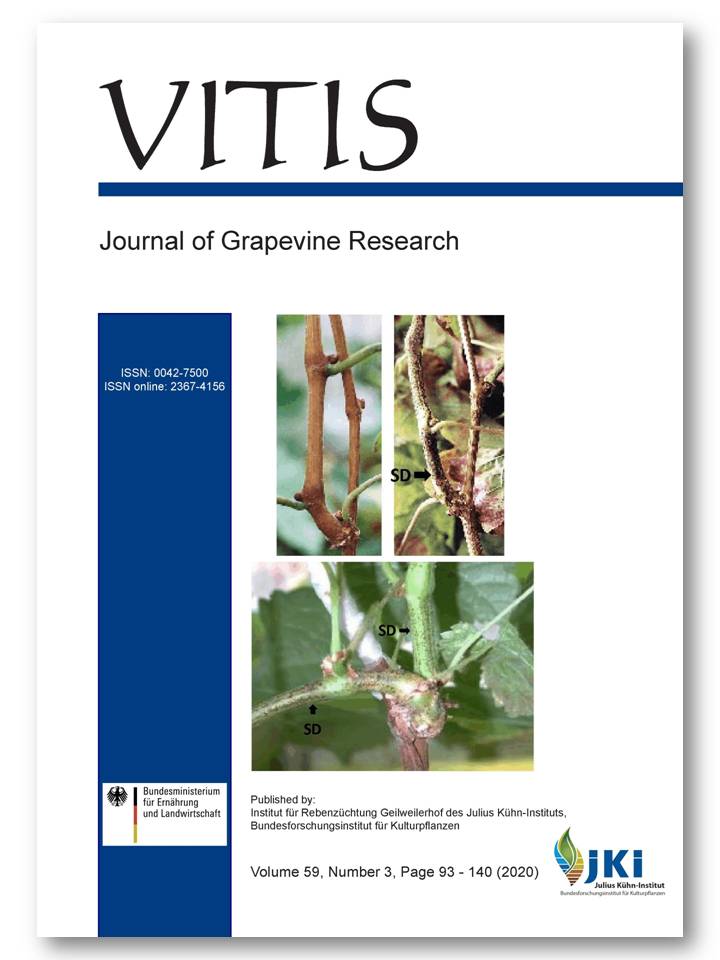Photosynthetic activity and grape yield of 'Alicante Bouschet' (Vitis vinifera L.) grapevines submitted to nitrogen supply methods and doses
DOI:
https://doi.org/10.5073/vitis.2020.59.133-140Keywords:
fertigation; gas exchange; net photosynthesis; nitrogen fertilization; nutritional status; vineyards.Abstract
The great majority of sandy soils present low nitrogen availability, generally below vines physiological demand, and therefore nitrogen fertilizer application, such as urea, is necessary. However, when urea is applied on the soil surface, the vine can use only a small amount of N. Thus, management strategies such as fertigation can increase N utilization by vine, reflecting in a greater photosynthetic activity and grape yield. The objective of this study was to evaluate the influence of nitrogen supply methods and doses on photosynthetic activity and grape yield of 'Alicante Bouschet' grapevines cultivated in sandy soil. The experiment was carried out in Santana do Livramento, in the southern region of Brazil, in a vineyard planted in 2011. The cultivar was 'Alicante Bouschet' grafted on '1103 Paulsen'. The experimental design was of randomized blocks in a bifactorial arrangement (dose x method). The N source used was urea (45 % N). The 0, 20, 60 and 100 kg N·ha-1 doses were applied on the soil surface, without irrigation (NWI) and via fertigation (NF). Photosynthetic activity, N concentration in leaves and grape yield during two growing seasons were evaluated. The application of N doses in soil increased N concentration in grapevine leaves by up to 53 % in NF and 18 % in NWI methods but did not affect yield. Strong correlations between yield and water use efficiency were also observed, evidencing a certain synchronism between the physiological demand of the grapevine and the offer of the adequate N dose by a more efficient method.
Downloads
Published
Issue
Section
License
The content of VITIS is published under a Creative Commons Attribution 4.0 license. Any user is free to share and adapt (remix, transform, build upon) the content as long as the original publication is attributed (authors, title, year, journal, issue, pages) and any changes to the original are clearly labeled. We do not prohibit or charge a fee for reuse of published content. The use of general descriptive names, trade names, trademarks, and so forth in any publication herein, even if not specifically indicated, does not imply that these names are not protected by the relevant laws and regulations. The submitting author agrees to these terms on behalf of all co-authors when submitting a manuscript. Please be aware that this license cannot be revoked. All authors retain the copyright on their work and are able to enter into separate, additional contractual arrangements.



